| Page 2 of 3 - The two RV Gypsies got a great view of the Rio Grande River at Big Bend National Park, plus the volcanic tuffs, mule ears, and the hot springs | |
October 10, 2012 |
|
The Rio Grande creates a distinct environment in Big Bend National Park. The two RV Gypsies watched people enjoying a swim in the river. Karen Duquette was wishing she had her bathing suit on so she could join them. Lee Duquette, as usual, did not have any interest to go into the cold water. |
|
 |
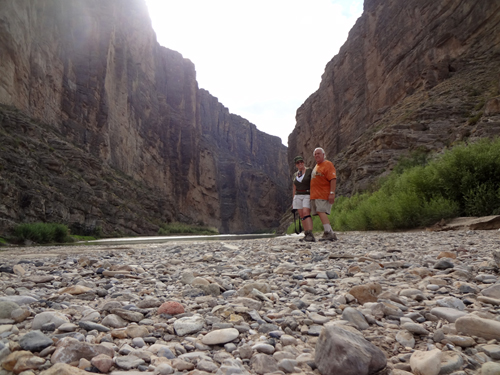 |
Below: The two RV Gypsies got a look at the Rio Grande River as it seemed to disappear into the canyon. |
|
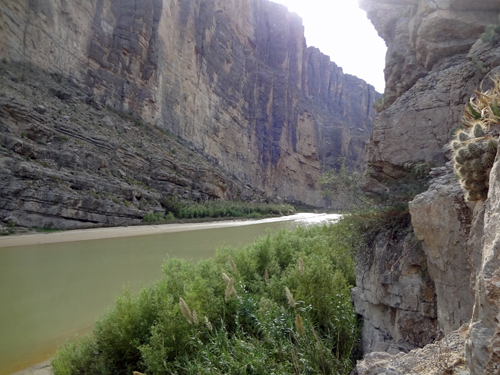 |
 |
Below: The two RV Gypsies decided to go up the winding path to get a view of the Rio Grande River from above. The path was paved with a few stairs and at times it became narrow, but it was not very strenuous because the switchbacks provided easy walking. |
|
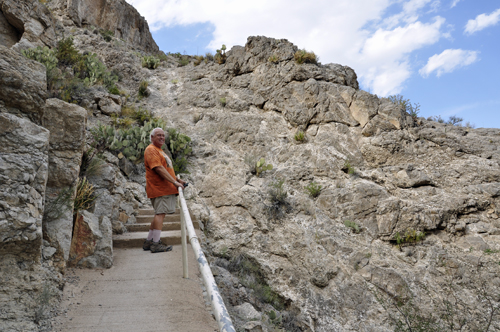 |
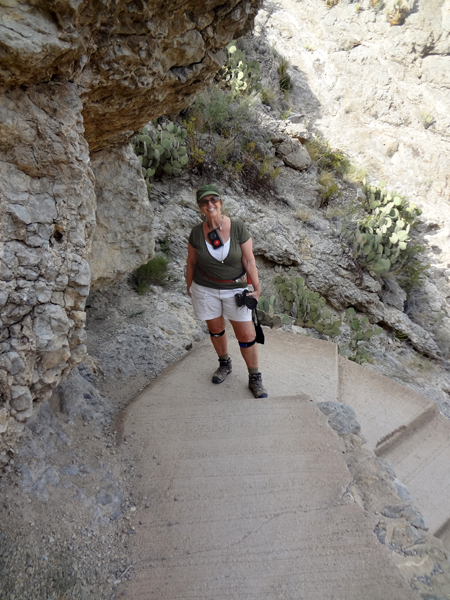 |
 |
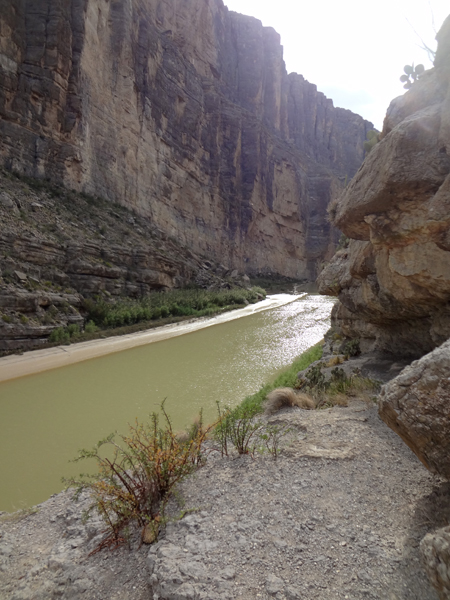 |
Below: The Big Bend Country has not always been arid desert land. Marine fossil prove this region was once beneath the sea. These oyster-like animals lived during the Cretaceous Period, about 100 million years ago. All fossils and rock formations are preserved in National Parks. |
|
 |
|
Below: Hechita, a member of the pineapple family, grows ONLY in the Big Bend Country. Compare the leaves and flowering stalks with those of lechuguilla. Both have long, tough and rigid leaves with sharp hard points. |
|
 |
|
 |
|
 |
 |
Below: The two RV Gypsies always take a lot of breaks, even on easy paths, so they can take lots of photographs. That is the life-style of an RV Gypsy - slow and easy! |
|
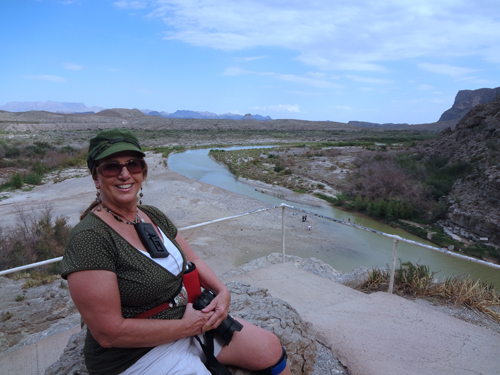 |
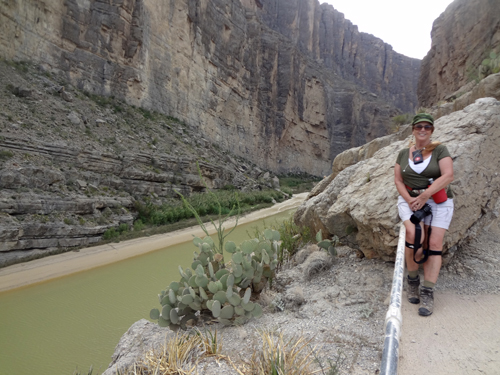 |
Below: The river provides water for many desert animals. On the the Mexican shoreline there are lots of tracks from wildlife. |
|
 |
 |
Below: This part of the path was not paved, but it was smooth, easy walking, and the view was amazing. |
|
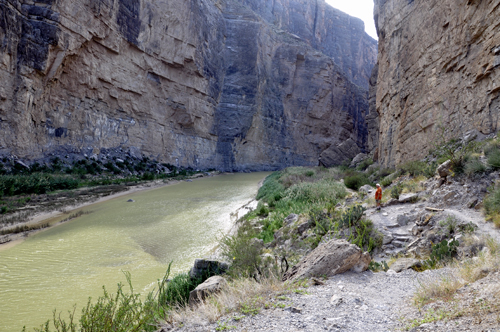 |
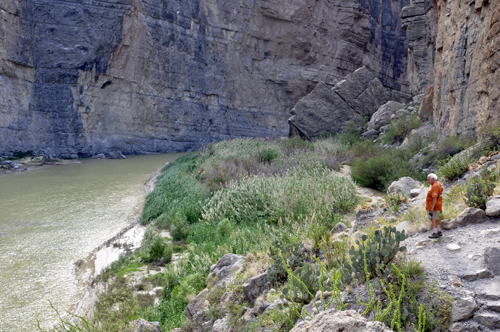 |
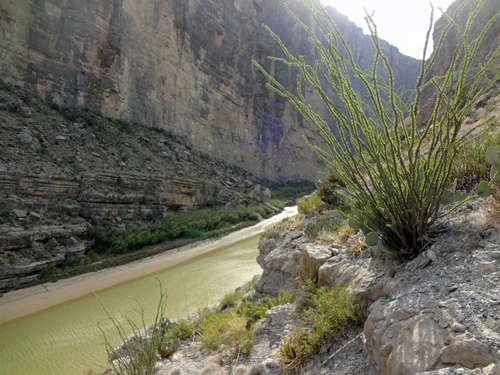 |
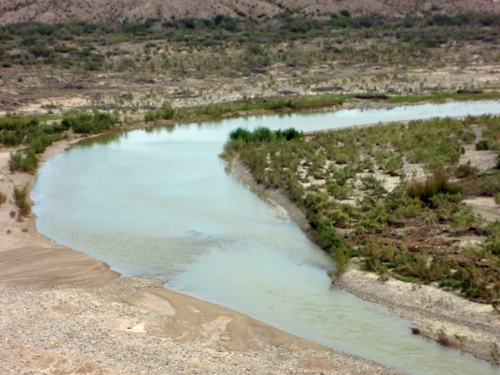 |
Below: The two RV Gypsies really enjoyed the amazing scenery at Big Bend National Park. |
|
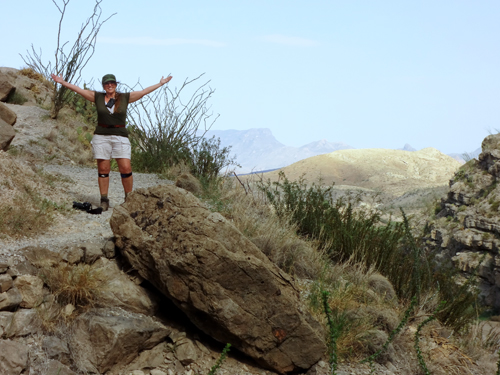 |
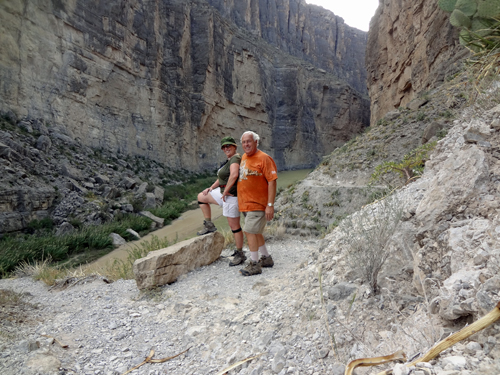 |
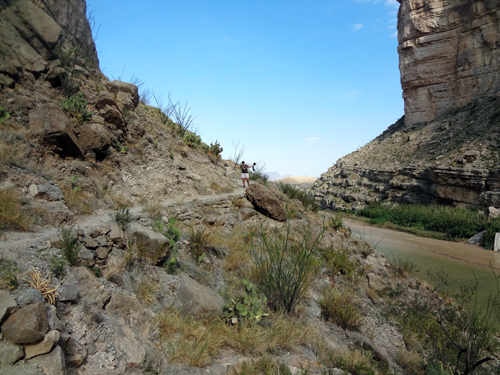 |
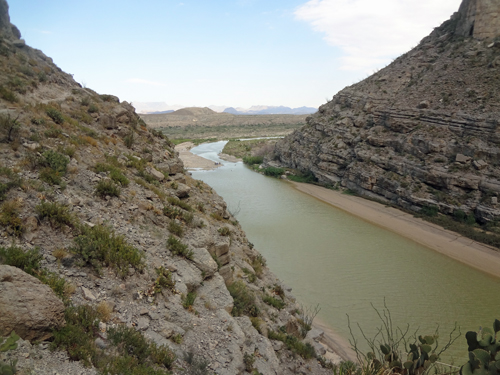 |
Below: Twenty minutes later, the two RV Gypsies were back at ground level and ready to drive on and see more of Big Bend National Park. |
|
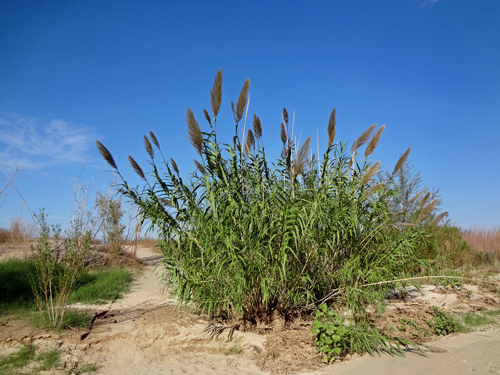 |
|
Below: Cerro Castellan (Castolon Peak) - The layers visible in the photos below reveal millions of years of volcanic events. Stacked in this tower are several lava flows and volcanic tuffs (ash deposits) with layers of gravel and clay from periods of erosion between eruptions. Pale beds of volcanic ash and dark basaltic boulders are signs of volcanism. |
|
 |
|
Below: The two RV Gypsies found it interesting and amazing how each side of the street was totally different in color, design and texture. They have seen this difference many times in the west, even on regular roadways, yet they are always intrigued by the amazing beauty in nature. |
|
 |
 |
Below: Mule Ears- the amount of sunlight from different angles and heights gives the mule ears a totally different look. |
|
 |
 |
 |
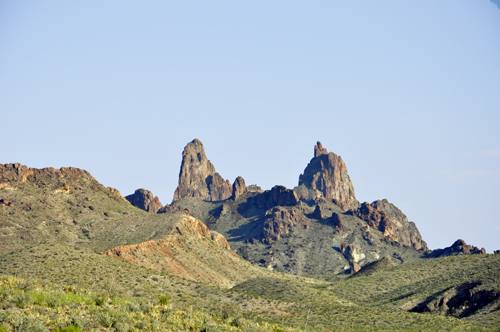 |
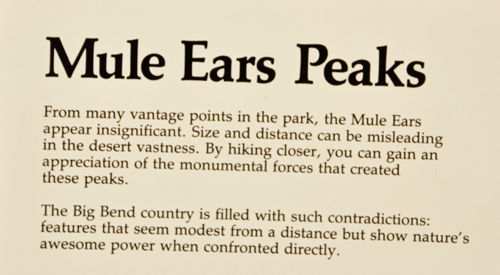 |
 |
 |
|
Below: Hot Springs Historic Trail - the hiking portion is an Easy Distance: 1/2 mile round trip.This trail passed remains of a resort, pictographs, a homestead, and hot springs. A brochure at the trailhead offered more information, but the brochures were all gone. The 105 degrees F springs are a popular destination, but one can continue to where the trail forks, (an additional 1/2 mile) leading to the top of the bluff and back to the parking lot. The two RV Gypsies were only interested in seeing the hot springs, so they did not continue past the hot springs itself. |
|
The winding dirt road leading to the Hot Springs was one way during part of it because it was narrow, curvy, bumpy, and with a big drop-off. |
|
.jpg) |
.jpg) |
Below: Really big palm trees - see how small the person sitting below them appears. |
|
.jpg) |
|
.jpg) |
.jpg) |
Below: This hot spring along a stretch of the Rio Grande River is believed to be related to normal faults. These faults formed between 18 and 23 million years ago. Today, groundwater circulating deep in the earth becomes heated before it returns to the surface as hot springs. The temperature of the spring water, which is heated geothermally, is 105 degrees F year-round; the water contains calcium carbonate, calcium sulfate, sodium sulfate, sodium chloride, and lithium. The springs' flow rate in 1936 was 250,000 gallons a day, but more recent measurements show a decrease. |
|
.jpg) |
.jpg) |
Below: The hot springs was very shallow. Karen Duquette wanted to take off her shoes and soak her feet, but Lee Duquette got very agitated so Karen did not do it. Actually, it took all of Karen's self-control not to just sit in the hot springs. She was not happy at all. |
|
.jpg) |
|
Below: Red pictographs (images painted onto rock) are seen high on the cliff face. Accurately interpreting designs such as these is impossible, but it is assumed that some figures had symbolic meaning, perhaps representing legends and stories concerning the origins of the people who made the images, or they could be related to their spiritual life. The red coloring is a pigment made from hematite, a mineral also called red ocher. Cinnabar, or mercury ore was also used in this area to produce a maroon pigment. Pigments were usually mixed with a binder of blood, egg or animal fat, which made the pigment adhere to the rock surface. |
|
.jpg) |
.jpg) |
.jpg) |
.jpg) |
.jpg) |
.jpg) |

 Please
Please